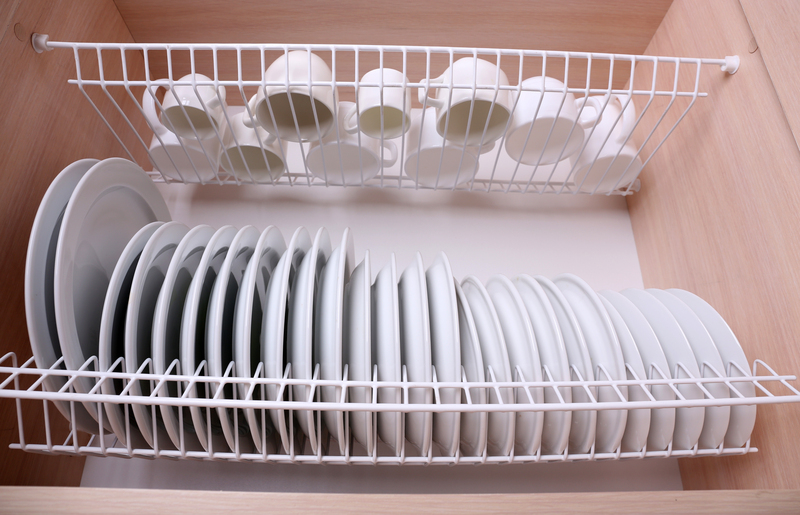Combat Dust Mites with These Home Techniques
Dust mites, nearly invisible to the human eye, are microscopic arachnids that thrive in warm, humid environments. These pests primarily feed on dead skin cells shed by humans and animals, making our homes their ideal habitat. Although they don't bite or sting, dust mites can cause allergic reactions and are a common trigger for asthma. Combatting dust mites is crucial for maintaining a clean, healthy living environment. Read on to discover effective home techniques to combat dust mites.
Understanding Dust Mites
Dust mites flourish in bedding, upholstered furniture, carpets, and other soft furnishings. They are particularly problematic for individuals with allergies, as their feces and body fragments can trigger allergic reactions and respiratory issues. Before implementing strategies to control dust mites, it is essential to understand their habits and habitats.

Reducing Humidity
Dust mites thrive in humid environments, typically between 70-80% relative humidity. Reducing indoor humidity can significantly decrease their population.
1. **Use a Dehumidifier**: Set up a dehumidifier in areas prone to high humidity, such as basements and bedrooms. Aim to maintain indoor humidity levels below 50%.
2. **Ventilation**: Ensure proper ventilation by using exhaust fans in bathrooms and kitchens. Additionally, open windows when weather permits to allow fresh air circulation.
Regular Cleaning
Consistent, thorough cleaning can substantially reduce dust mite populations.
1. **Vacuuming**: Use a vacuum cleaner equipped with a HEPA (High-Efficiency Particulate Air) filter. Vacuum carpets, rugs, and upholstered furniture at least once a week. HEPA filters trap small particles and allergens that regular vacuum cleaners might miss.
2. **Dusting**: Dust surfaces such as shelves, countertops, and electronics with a damp cloth or microfiber cloth to trap dust instead of simply displacing it into the air.
3. **Washing Bedding**: Wash sheets, pillowcases, and blankets weekly in hot water (at least 130?F/54?C) to kill dust mites. Use allergen-proof covers for pillows, mattresses, and box springs.
Using Allergen-Proof Bedding
Specialized bedding can create a barrier between you and dust mites, reducing exposure to allergens.
1. **Mattress and Pillow Covers**: Encase mattresses, pillows, and box springs in allergen-proof covers. These covers are designed to prevent dust mites and their waste products from passing through the fabric.
2. **Frequent Washing**: Wash allergen-proof covers at least once a month in hot water to maintain their effectiveness.
Minimizing Upholstered Furniture
Dust mites thrive in upholstered furniture. Opt for materials that are less favorable for their growth.
1. **Leather or Vinyl Furniture**: Consider replacing upholstered furniture with leather or vinyl alternatives, which are less likely to harbor dust mites.
2. **Washable Slipcovers**: Use washable slipcovers on sofas and chairs, and wash them regularly in hot water.
Reducing Clutter
Cluttered environments provide more surfaces for dust to accumulate. Declutter your home to minimize dust mite habitats.
1. **Simple D?cor**: Choose simple and minimalistic design elements. Reduce the number of knick-knacks, decorative pillows, and other dust-collecting items.
2. **Storage Solutions**: Use closed storage bins and cabinets to store items that could collect dust.
Using Air Purifiers
Air purifiers with HEPA filters can significantly reduce airborne allergens, including dust mites.
1. **Placement**: Position air purifiers in commonly used rooms, such as bedrooms and living areas.
2. **Maintenance**: Regularly check and replace air purifier filters according to the manufacturer's instructions to ensure optimal performance.
Freezing and Sun Exposure
Extreme temperatures can be effective in killing dust mites.
1. **Freezing Items**: Place small, non-washable items (such as stuffed animals) in a sealed plastic bag and freeze them for 24 hours.
2. **Sun Exposure**: Expose rugs, cushions, and other soft furnishings to direct sunlight for several hours. The UV rays and heat from the sun can help reduce dust mite populations.
Using Anti-Dust Mite Sprays
Using specialized sprays can assist in controlling dust mites.
1. **Tannic Acid**: Sprays containing tannic acid can neutralize dust mite allergens. Apply these sprays to carpets, furniture, and bedding, following the product instructions.
2. **Essential Oils**: Essential oils like tea tree oil and eucalyptus oil have been shown to have anti-dust mite properties. Mix a few drops with water in a spray bottle and lightly mist surfaces.

Professional Cleaning Services
For significant infestations, professional cleaning services specialize in allergen removal.
1. **Deep Cleaning**: Hire professionals for deep cleaning carpets, draperies, and upholstery. Professional services often use industrial-grade steam cleaners and other equipment that effectively remove dust mites and their allergens.
2. **Inspection and Advice**: Professional services can also offer advice on maintaining a dust-mite-free environment and identify areas that may require additional attention.
Conclusion
Combatting dust mites requires a multifaceted approach involving regular cleaning, humidity control, and the use of specialized products and techniques. By understanding their habits and creating a hostile environment for these microscopic pests, you can significantly reduce their population and create a healthier home. Adopting these home techniques will not only help in managing dust mites but also improve overall indoor air quality, benefiting everyone in your household.



